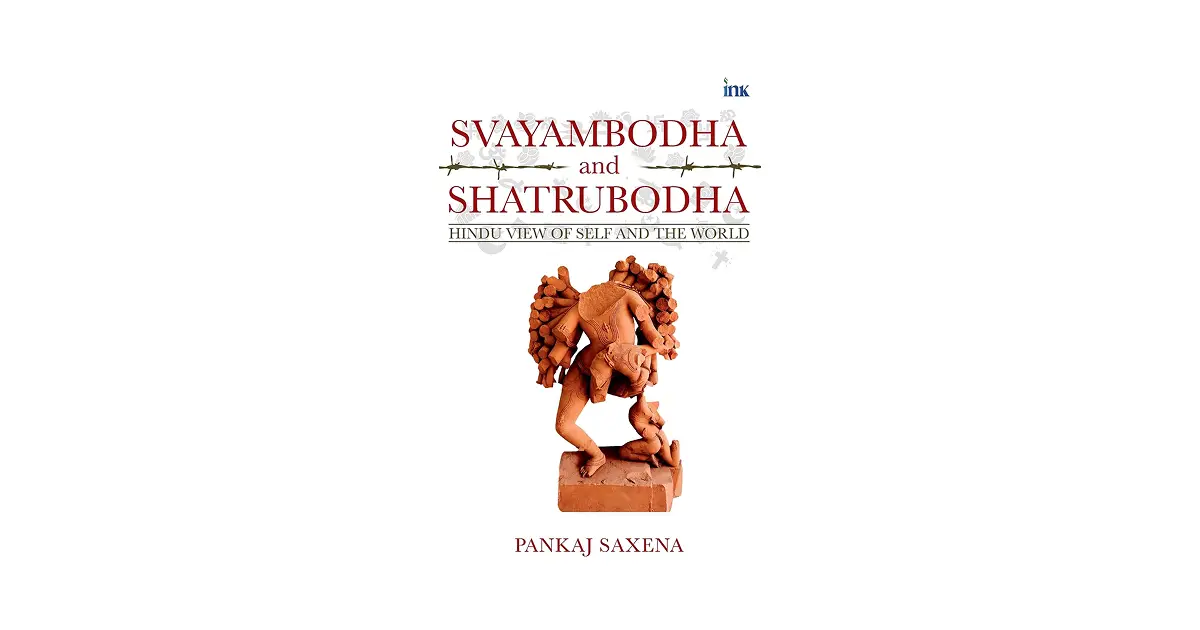In the book ‘GeoTechnoGraphy: Mapping Power and Identity in the Digital Age’, Samir Saran and Anirban Sarma undertake a sweeping and incisive dive into the evolving relationship between people, place, and power - in an era increasingly dominated by invisible infrastructures and algorithmic logics. At its core, the book is an exploration of a fundamental reconfiguration of the human condition, one in which the enduring significance of geography is neither dismissed nor romanticized, but rearticulated through a new conceptual lens that he terms “geotechnography” - a collision of geography, technology, and society that has come to define the contemporary global experience. This neologism functions not merely as a descriptive tool, but as an analytical frame for understanding how modern life is being restructured by digital platforms, data economies, and transnational actors whose operations transcend any one nation’s territorial sovereignty.
Saran opens with the haunting observation that not since the cataclysms of World War II has the global order been so visibly shaped by the violent pursuit of land and identity. From the fevered conflicts in the Middle East over claims to belonging, to the revanchist territorial ambitions in Europe, to the Taliban’s imposition of atavistic socio-religious structures upon the Afghan populace, to the resource-driven bloodshed in parts of Africa - each of these phenomena has animated our age territorial conflict and existential struggle. Interestingly, the novelty of the present condition lies not in spatial contestation itself, but in the shifting nature of how places are conceived, governed, and experienced. In an intriguing dialectical manner, digital technology isolates the multitude into disparate individuals, yet also has coalescence around geography or identity. The authors note that the rootedness of individuals in physical geographies is now being subtly displaced by a new ontological configuration in which identity is shaped not by immediate environment but by one's embeddedness in global digital ecosystems, whose architectures are simultaneously connective and alienating, liberatory and intrusive. In other words, the global turbulence, it is argued, is symptomatic of a deeper churn in which the classical notion of geography is no longer sufficient to explain the full spectrum of power dynamics at play.
Rather than positing a diminishment of geography's centrality, the authors articulate a more complex thesis: geography is being reconstituted through its entanglement with technology and society into what they term geotechnography. This reconfiguration does not merely overlay digital infrastructures upon territorial space; it recasts the very terms through which identity, sovereignty, and civic participation are negotiated. The traditional rootedness in land—a foundation for national temperament and sovereign legitimacy - is increasingly being displaced, or at least problematized, by emerging digital subjectivities forged through persistent engagement with transnational platforms and algorithmically curated cloud societies. These virtual collectives, though often grounded in specific geographies, operate with a global logic, subverting local consensus while amplifying new political imaginaries and movements across borders.
The book introduces the notion of cloud societies to describe emergent online communities - networks of individuals bound not by physical proximity but by shared interests, values, or political orientations. These cloud societies serve as new vectors for both consensus and conflict, shaping narratives, influencing elections, and triggering protests that may manifest offline in unpredictable ways. They represent the porousness of the boundary between the virtual and the material, illustrating how digital space is not a separate domain but one that loops back to affect the real-world geography from which it ostensibly departs. This thought has parallels with Korean philosopher Byung-Chul Han, who writes -
[A]ccording to Michael Hardt and Antonio Negri, globalization has brought forth two opposing forces. On the one hand, it has erected a decentered, deterritorialized, and capitalist order of domination - “empire.” On the other hand, it has produced “multitude”—an aggregate of singularities communicating with each other over networks and acting collectively. Within empire, it resists empire.
‘GeoTechnoGraphy’ is particularly compelling in the way it refuses to reduce the crisis of the digital age to a mere battle between “Big Tech” and the state. Instead, the authors map out a much more intricate and layered series of policy challenges - each of which exposes the structural incoherencies and normative contradictions at the heart of our current digital world order. He identifies four foundational “design flaws” in the geotechnographical landscape, which shape today’s technopolitical landscape and collectively highlight the manner in which technological globalization - sans sensitivity to local conditions - risks deepening inequalities, weakening governance, and fostering a backlash against Big Tech. The first of the concerns is the political economy of technology, where the ideologies of production - particularly those emerging from Silicon Valley - are imposed upon sites of consumption that neither share the same epistemologies of speech, nor the same cultural tolerances or historical trajectories. The transplantation of technologies whose architectures are imbued with First Amendment absolutism into societies that operate with different ethical boundaries has resulted not in a universal public sphere, but in an architecture of persistent conflict and cultural offense. These platforms, built in environments where speech is protected to the furthest extent, are deployed in places where speech is governed by social contracts, communitarian norms, and varying thresholds of harm, thereby institutionalizing a right to offend under the guise of digital openness.
The second design flaw lies in the reconceptualization of citizenship itself, a reconfiguration whereby the social contract - once mediated by the nation-state and grounded in constitutional legitimacy - is increasingly brokered by private entities that provide essential services and infrastructure with scant regard for local governance structures. Cloud service providers, e-commerce conglomerates, and social media platforms now control significant portions of a country’s economic, political, and communicative infrastructure, acting as de facto public utilities while remaining accountable to no public. The result is a new kind of borderlessness - not one that emerges from idealistic visions of cosmopolitanism, but one that enables multinational corporations to operate with impunity across jurisdictions. Examples from India underscore this tension: the government’s clashes with Twitter over noncompliance, and Meta’s threat to withdraw WhatsApp from India over encryption laws signal the erosion of national authority in the face of corporate hegemony.
Third, the authors address the asymmetry between the sites of technological innovation and those of regulation. The United States continues to lead in AI development and digital innovation, while the European Union positions itself as the global regulator, crafting frameworks such as the General Data Protection Regulation (GDPR) and the AI Act. This dual hegemony - of technological production by the US and regulatory norm-setting by Europe - marginalizes voices from the Global South, rendering their contextual needs peripheral to the so-called universal standards that are in fact generated within a narrow epistemic community. What is framed as ‘responsible innovation’ or ‘trustworthy AI’ often serves the cultural and commercial interests of these elite geographies, while developing countries are left to retroactively adopt, adapt, or resist such norms with limited institutional or epistemological resources.
Finally, the book draws attention to what it terms a “capabilities asymmetry,” wherein the uneven distribution of technological infrastructure and regulatory capacity determines not only how technologies are adopted, but how societies can meaningfully respond to them. In many cases, so-called digital leapfrogging - celebrated as a sign of progress - has in fact created institutional vacuum, ceding sovereignty to supra-national entities such as global corporations.
In mapping these transformations and undertaking a discussion of them, ‘Geotechnography’ resists reductive solutions. Instead, the authors acknowledge promising developments such as the European Union’s General Data Protection Regulation (GDPR) and India’s burgeoning digital public infrastructure, and caution against leaning towards either extreme of Big Tech or Big Government. Their preference is for agile, multistakeholder frameworks and light-touch regulations that empower citizens and entrepreneurs while preserving the ethical and civic dimensions of technological life.
The book’s analysis of the design flaws in today’s global techno-political architecture provides a compelling springboard for reimagining digital futures through the lens of Indian knowledge systems. As the post-digital age ushers in new complexities - blurring the lines between physical and virtual, national and global - the urgency to ground technology policy in locally rooted, culturally informed frameworks has never been greater. As Byung-Chul Han writes in In the Swarm -
Digital psychopolitics is taking over the social behavior of the masses by laying hold of, and steering, the unconscious logic that governs them. Digital surveillance society - which has direct access to the collective unconscious (that is, the future social behavior of the masses) - is assuming totalitarian traits. It is handing us over to programming and control.
This is where the role of Indian knowledge traditions, with their deep emphasis on balance, ethical governance, pluralism, and collective as well as individual well-being and maximisation, becomes critical for their offering of valuable paradigms for recalibrating digital ecosystems.
An integral part of this is the creation of a dhārmika ethos, which places an emphasis on duties and responsibilities over unchecked rights and can conceivably inspire more nuanced regulatory approaches.
As innovation continues to outpace regulation, policymaking must evolve from reactive interventions to anticipatory governance, informed by civilizational insights that prioritize long-term social resilience. Indian epistemologies - holistic, context-sensitive, and hyperlocal - can counter the one-size-fits-all policy models exported from the West. They can guide the design of tech systems that are not only inclusive and adaptable but also attuned to India's unique linguistic, cultural, and socio-political diversity. In this rapidly shifting landscape, policy rooted in indigenous intellectual traditions can serve as a stabilizing force, anchoring digital transformation in values that are just, sustainable, and locally resonant. Bridging the gap between technological innovation and cultural wisdom is not merely aspirational - it is imperative if we are to shape a digital society that empowers rather than erodes the social contract.
Another contribution of ‘Geotechnography’ lies in its refusal to succumb to either an overreliant optimism in technology or at the other extreme, to a fatalistic despair. Instead, the book imagines an alternative ethic to digital life—one that does not merely borrow frameworks from the Global North, but draws deeply from indigenous intellectual traditions. In particular, Saran gestures toward the Indian civilizational ethos, suggesting that its long-standing commitments to dharma and the primacy of the collective over the individual and hyperlocal, hyper-contextualised over the centralised. These considerations can guide policymakers to craft (especially) digital laws that balance freedom with accountability and innovation with social cohesion while never compromising on sovereignty and identity of the state. In the post-digital society, where the human psyche is entangled with algorithms, we need policies that are not merely technocratic but informed by our svabhāva and svadharma, ensuring that governance structures evolve organically from the ground up rather than being imported en-masse in a top-down fashion. In advocating for regulatory pluralism - an ecosystemic approach in which states design governance models that resonate with their cultural and institutional particularities - they’ve essentially carved out a blueprint for shaping India’s policy considerations revolving around technology.
‘GeoTechnoGraphy’ describes a world in which the geography of power is increasingly shaped by code, and the battleground is no longer physical territory but the human mind. In such a world, it becomes imperative to ask: how can philosophy of the mind guide policy? The book outlines that when technology reformulates geography, the dislocation is no longer just spatial or material - it is psychological. With the gateways to our sensory perception being increasingly colonized, this calls for a deeper civilizational wisdom that transcends transactional, ephemeral policy. Here, Nītiśāstra offers valuable insights for governance and leadership. It emphasizes vinaya (humility) and indriya jaya (mastery over the senses) as the foundation for just and stable governance.
Indriya jaya or indriya nigraha is not a call for repression but for refined discernment (viveka), principled detachment (vairāgya), focused restraint (saṃyama), and sustained attention (dhāraṇā) - qualities essential for policy leaders navigating the hyperstimulated post-digital age.
In an era of rapid innovation and fleeting truths, tech policy cannot remain merely reactive or technocratic. It must be informed by a deeper ontology of the self - one that teaches us that to govern the digital world wisely, we must first look inward and cultivate indigenous governance frameworks in order to better inform policy.
Saran and Sarma’s work is not only a critical intervention in digital policy discourse, but also a provocation to reimagine sovereignty, belonging, and agency in a time when traditional coordinates of identity are being scrambled by technological acceleration and institutional decay. While Saran remains cautiously optimistic about the potential of light-touch regulations and multistakeholder models, he is also clear about the structural limits of such arrangements in the absence of deep moral and epistemic realignments. His call is ultimately one of introspection: for societies to look within, to draw from their own historical and cultural reservoirs, and to craft digital futures that are not dictated by global hegemonies but shaped by plural and grounded visions of the good life.
‘GeoTechnoGraphy’ reminds us that while the architectures of the digital may be transnational, the values that sustain our communities are always local, historical, and hard-won—and that only by holding onto these can we hope to craft a digital age that is as just as it is connected.
The premise of ‘GeoTechnoGraphy’ has considerable overlap with Martin Gurri’s The Revolt of the Public and the Crisis of Authority in the New Millennium, an incisive exploration of the seismic shifts occurring in political and social structures due to the information revolution. Read our review of that book here.
GeoTechnoGraphy can be purchased here.







